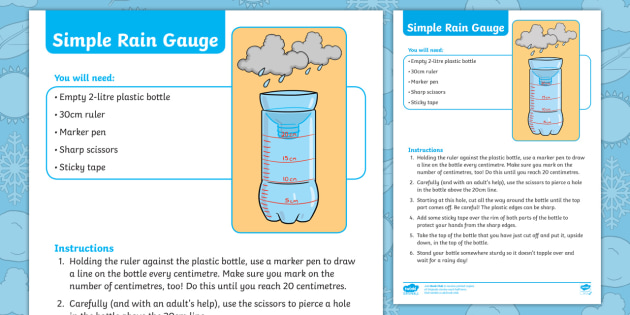How to Choose the Right Rain Gauge for Reliable Precipitation Tracking
How to Choose the Right Rain Gauge for Reliable Precipitation Tracking
Blog Article
Introducing the Science Behind Rainfall Gauges: Exactly How These Devices Play a Critical Function in Environment Research and Environmental Tracking
Rainfall evaluates, apparently simple gadgets, hold an extensive significance in the world of environment research and ecological surveillance. These unassuming instruments silently accumulate one of nature's most necessary components-- rainfall. Behind their unpretentious exterior exists an intricate scientific research that is essential for comprehending the dynamics of our atmosphere. As we peel off back the layers of this clinical shroud surrounding rain assesses, we reveal a globe where accuracy, information precision, and thorough monitoring converge to introduce a deeper understanding of our changing climate and its influence on the world.
Importance of Rainfall Scales
Rainfall evaluates play a crucial duty in surveillance and determining precipitation levels, giving important data for environment study and evaluation. These gadgets are essential in measuring the amount of rains that occurs in a specific location over a specific period. By gathering and measuring rainwater, rainfall evaluates offer beneficial understandings into the circulation and intensity of precipitation, helping meteorologists, hydrologists, and climatologists in recognizing weather condition patterns and trends.
Among the essential reasons rainfall evaluates are essential is their capacity to offer accurate and local data. Unlike satellite or radar-based dimensions, which offer more comprehensive observations, rainfall evaluates offer specific details certain to the place where they are positioned. This localized data is vital for numerous applications, consisting of flood projecting, dry spell monitoring, and water source administration. In addition, long-lasting information collected from rain determines assists in examining environment change effects and patterns, adding substantially to clinical research and decision-making processes. Basically, rainfall gauges act as essential tools in the area of weather forecasting and environmental scientific research, playing a crucial role in advancing our understanding of climate and environment dynamics.
Kinds Of Rainfall Scales

Functionality and Procedure
In the realm of environment study and meteorological studies, the performance of rain evaluates lies in their complex functionality and exact functional mechanisms. Rainfall gauges are made to precisely measure the quantity of precipitation that drops over a specific location during a collection period.
The capability of rain determines is based on the concept of determining and collecting rain in a standard way. This collected information is important for understanding regional weather patterns, tracking long-lasting environment trends, and analyzing check ecological impacts. To make sure accurate dimensions, rainfall assesses requirement to be strategically put in open locations away from obstructions such as structures or trees that can hinder the collection procedure.
The functional aspect of rain assesses entails regular maintenance to stop debris accumulation, calibration checks to preserve dimension precision, and data tape-recording for evaluation (rain gauge). Overall, the functionality and operation of rainfall determines are essential for gathering reliable precipitation data crucial to environment study and environmental monitoring
Role in Climate Research Study
Provided the essential importance of precise rainfall dimensions in recognizing weather condition patterns and environmental effects, the function of rainfall assesses in environment research study is important. Rain evaluates provide vital data for climate research study by measuring the amount of rainfall that tips over a certain area during a given duration. This information is critical for monitoring long-term fads in rainfall patterns, examining the effect of climate change on rains circulation, and enhancing climate versions.

Environment scientists utilize information gathered from rainfall evaluates to analyze variants in precipitation degrees, determine local climate fads, and examine the effectiveness of water source management approaches. By comparing historic rainfall data with click here for more existing measurements, researchers can find shifts in rainfall patterns, such as changes in the regularity or intensity of rainfall occasions. This information is essential for recognizing exactly how environment modification is affecting rainfall dynamics and can aid policymakers make notified choices relating to adjustment and mitigation approaches.
Applications in Environmental Tracking

In flood forecasting, rainfall gauge information helps to track rains strength and circulation, enabling authorities to provide timely warnings and take required steps to mitigate flooding threats (rain gauge). Dry spell tracking relies upon rain scale information to examine wetness levels in the soil and track rainfall deficiencies, helping in the identification of drought-prone areas and the execution of dry spell reaction techniques
Furthermore, rainfall scale data plays a vital duty in water source management by providing details on water view it now accessibility and usage fads. This information is used to make enlightened choices concerning water allocation, preservation steps, and sustainable water source planning. In addition, in agriculture, rain scale data aids farmers in maximizing irrigation timetables, crop selection, and general farm monitoring practices based upon regional rainfall patterns. Generally, rain assesses are vital tools in environmental tracking, offering useful insights that add to informed decision-making and lasting source monitoring.
Conclusion
In final thought, rainfall determines are important tools for determining precipitation, supplying beneficial information for environment study and ecological monitoring. With various types and performances, rain evaluates play a critical role in understanding precipitation patterns and their influence on the environment. By accurately measuring rainfall, these devices contribute to the development of scientific knowledge and help in making informed decisions pertaining to water resource administration and catastrophe preparedness.
Rain evaluates play a crucial duty in surveillance and gauging rainfall degrees, giving important data for climate research study and analysis. The conventional rain scale, understood as the "tipping bucket" scale, is one of the most generally utilized gadgets. Ultrasonic rain determines usage noise waves to spot the presence of rainfall, supplying real-time data on rainfall degrees.Climate researchers make use of data collected from rainfall evaluates to analyze variants in precipitation degrees, determine regional environment trends, and review the efficiency of water resource administration techniques.In conclusion, rainfall assesses are crucial devices for determining precipitation, offering useful information for environment research and environmental monitoring.
Report this page